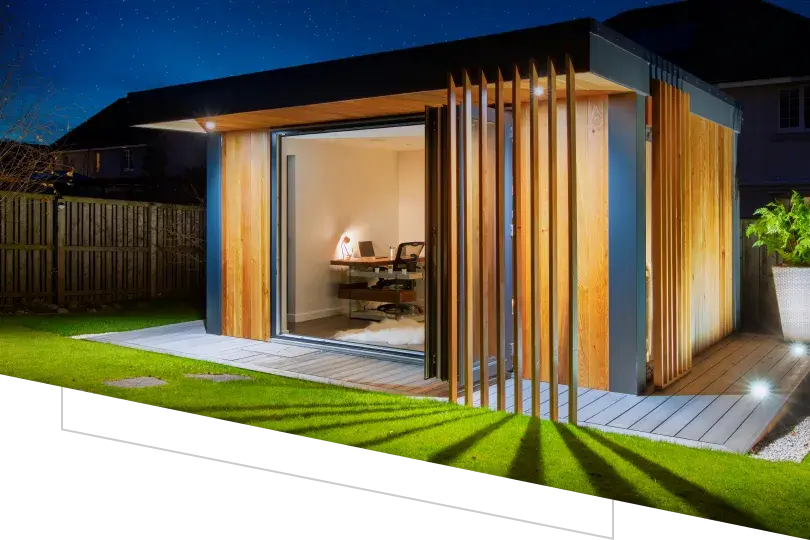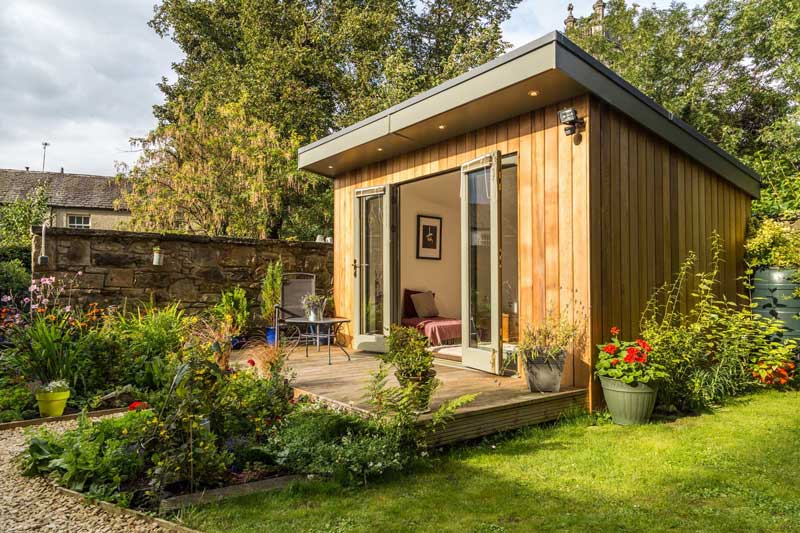Excellent Suggestions For Planning Permission For Garden Sheds
Excellent Suggestions For Planning Permission For Garden Sheds
Blog Article
How Much Planning Permission Do You Need For A Garden Room, Etc.?
Transportation issues can affect the need for a planning permit for the construction of garden offices, conservatories outhouses, garden extensions or outhouses. Here are some key things to think about: Visibility, Sightlines and other similar factors.
If the new structure obstructs the visibility of motorists entering or exiting the building, or impacts sight lines at junctions or curves on the road, then planning permission is required. The planning authority will evaluate whether the building is danger to road safety.
The highway is close by:
Planning permission is normally required for buildings that are built near to highways, for example extensions or front garden rooms. There are certain distance rules to ensure the building doesn't interfere with the operation of the highway.
Access and Egress
Planning permission is required to alter access points, for example, adding new driveways or altering existing ones in order to accommodate the building. This will ensure access and exit points are secured and do not disrupt the flow of traffic.
Parking Provision
If the new structure will impact existing parking spaces, or require additional parking the planning permit is needed. The authority for planning will evaluate whether the proposed development is able to accommodate enough parking spaces or doesn't cause congestion on the streets.
Traffic Generation
Developments that are expected to create an increase in traffic, for example gardens that are used for business purposes that have clients who visit, require approval for planning. The plan will assess to determine how the local traffic flow and road safety is likely to affect.
Impact on Pedestrian Access:
If the proposed structure would encroach on pavements or pedestrian pathways the building must be approved for planning. A key consideration is to make sure that pedestrians have access to the area and that it is secure.
Roads and Construction Impacts
Planning permission is sometimes required to minimize the impact construction activities will have on highways. The planning authorities are able to create conditions that will reduce disruptions to the road network during construction.
Drainage and runoff from water
Another factor to be considered is the development's effect on drainage or runoff. The permission for planning will ensure that the proposed structure does not cause flooding or drainage problems that might cause problems for the road.
Street Furniture and Utilities
If the proposed construction will impact street furniture (e.g. signs, lamp posts) or underground utilities (e.g. water pipes, electrical cables), planning permission is needed. To address these concerns the planning authority must work with the concerned agencies.
Highway Authority Guidelines
Local highway authorities could have specific guidelines or requirements for development close to highways. To ensure safety on the road, planning permission is required to ensure compliance with these regulations.
Disturbing and noise from traffic:
If the new structure will cause noise disturbance or disruption to traffic (e.g. garden offices that host visitors or deliveries) Planning permits will have to be obtained in order to determine these impacts and to mitigate the impact.
Accessibility to Public Transport
Planning permission is required to develop developments that might affect public transport facilities like stations or bus stops. Transport users using public transport will be assessed, as well as the integration of the transportation network.
In the end, highways concerns are an important factor in the planning permission process for garden rooms, conservatories outhouses, garden offices or extensions. To make sure that the development you are planning will not adversely impact traffic safety, road safety, pedestrians access, or the overall infrastructure, you must make sure to check this. An early consultation with the local highway authority as well as the planning authority is a good way to resolve these issues and ensure that the development is in compliance with relevant regulations. Have a look at the best warm garden rooms for site examples including outhouses for garden, garden rooms hertfordshire, outhouse garden rooms, garden office hertfordshire, garden office electrics, garden room planning permission, myouthouse, 4m x 4m garden room, garden room conservatory, insulated garden rooms and more.
What Height Restrictions Must You Adhere To When Planning The Layout Of Your Garden?
When building garden rooms, conservatories outhouses, gardens offices, or extensions, specific height restrictions determine whether permits for planning are required. These are the main requirements regarding height that you should be aware of The general height limits:
A detached outbuilding, or an extension with a dual pitched roof (such as a gable) should not rise higher than 4 meters.
Any other type of roof (flat or single-pitched) must not exceed three meters in height. ), the maximum height should not exceed 3 meters.
Proximity of borders:
The height limit for a structure within 2 metres of the property line isn't to exceed 2.5 meters. This is also the case for similar outbuildings like garden rooms, sheds or similar structures.
Eaves Height:
The maximum eaves length (the distance that extends from the lowest roof point to the highest eaves elevation) of any structure cannot exceed 2.5 metres.
Conservatories, extensions and various types of conservatories:
The maximum height of a rear extension that has a single story cannot exceed 4 metres. Included in this is the roof as well any walls that are parapet.
Side Extenders
Side extensions should have an maximum height of four meters and must not exceed half the width of original home.
Special Roofs
The roof of structures with a roof that is flat can only be built to a maximum 3 m in height.
Additional Restrictions for Designated Areas
In conservation zones, in Areas of Outstanding Natural Beauty(AONB) and other areas designated, stricter limitations on height can be imposed and planning approval may be required for buildings which would otherwise be within the permitted development rights.
Buildings at National Parks
Like designated areas structures in National Parks may have additional height restrictions requiring planning permission.
Roof Design
Consider the roof's height without chimneys, antennas etc. Consider the height. Planning permission is required if the construction's height is higher than the allowed development limits.
Impact on Neighbours:
Planning permits are required even if the structure is not over the limit of height. This could be required when there is a significant impact on sunlight, privacy or views of adjacent properties.
Maximum Overall Height
The overall height of any structure must not exceed 4 meters. A garden office built with roofing that is dual-pitched, for instance can't be taller than 4 meters.
Decking and Platforms
To ensure that the structure does not need approval for planning, the decking or platform that is attached to it cannot be higher than 0.3 metres above the ground.
You should always check with the local planning authority to find out about any modifications to regulations and specific rules. Even if a project is in the scope of permitted rights of development, local changes or specific property conditions may require permission to plan. Take a look at the most popular garden room or extension for site info including what size garden room without planning permission, outhouse garden, garden office hertfordshire, garden rooms in St Albans, out house for garden, costco outbuildings, outhouse uk, outhouse garden, outhouse builders, outhouses for garden and more.
What Planning Permissions Are Required For Gardens, Rooms, Etc. On Agricultural Lands?
If you are planning to construct an extension, a conservatory, garden office, or an outhouse or expand your property it is necessary to get planning permission. Here are a few key aspects.
The land that is designated as agriculturally is utilized for farming and other similar activities. Planning permission is generally required to alter the purpose of the land from agriculture to residential or garden structures. This is because it requires a shift in the designated agriculture purpose.
Permitted Development Rights:
Residential land comes with a distinct set of development rights that are permitted than agricultural land. Certain kinds of agricultural structures are able to be built without full planning approval, but this is usually only for farms and not for gardens for residential homes or offices.
Size and Scale
The size and scale of the proposed structure will influence whether planning permission is required. Planning permission is typically needed for large buildings or structures that cover a large area.
The impact on the use of agriculture:
It is more likely that the need for planning permission will arise in the event that a structure being constructed interferes in the agriculture use of the land. For example, reducing the available area for crops or animals.
Green Belt Land:
There are additional restrictions that are in place when the property is designated as Green Belt. These restrictions seek to limit the spread of urban sprawl and protect open space. Planning permission is typically required for any new construction on Green Belt land.
Design and Appearance
The structure must be designed and built in a way that is compatible with the rural features of the surrounding area. The building must not have an adverse impact on the surrounding landscape.
Environmental Impact:
Construction on agricultural land must consider the impact on the environment. Planning permission may require an environmental assessment to ensure that the proposed construction does not damage local ecosystems or wildlife habitats.
The proximity of the structures
The proximity of a garden area or office space planned to agricultural facilities could impact plans. Structures built close to farms that are already in use may be viewed differently from the ones in open fields.
Access to infrastructure
It is important to consider the impact of the proposed building on existing infrastructure such as roads, waste management, and water supply. Planning permission will be a way to determine whether the existing infrastructure is able to support the building's construction.
Use Class Order
The law of planning defines the use classes for agricultural land. In order to ensure that the new usage is in line with local policies on planning, it's often necessary to get planning permission before changing the class.
Local Planning Policies
Local planning authorities are required to have distinct policies for agricultural land. Local planning authorities have special policies for land used for agriculture.
National Planning Policy Framework
In the UK National Planning Policy Framework is a framework which provides guidelines for the development of land and its use. The planning permission granted to agricultural structures will be assessed according to NPPF which focuses on sustainability and rural area protection.
In summary it is clear that planning permission for conservatories, garden rooms outhouses, garden offices or extensions on agricultural land is usually required due to the need to alter the land's usage and to ensure compliance with national and local planning policies. Contact the local authority for planning to find out the requirements and then obtain the approvals you require. Have a look at the recommended how big can you build an outhouse without planning permission for more recommendations including what size garden room without planning permission uk, composite garden office, small garden office, costco garden rooms, outhouse buildings, garden outhouse, outhouses, costco garden buildings, Tring garden rooms, conservatories and garden rooms and more.